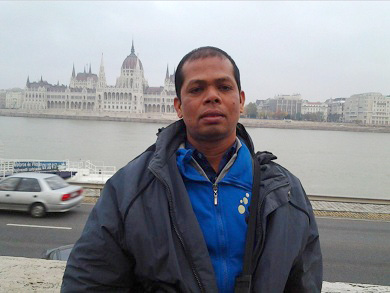Analysis of Marketing Communication Strategy for the Tourism Office of West Nusa Tenggara Province through the Official Instagram Account @Lomboksumbawa.Go
Abstract
Tourist visits to the Province of West Nusa Tenggara at the end of 2021 will undoubtedly be an excellent opportunity for progress in improving the economy both regionally and nationally. However, along with the COVID-19 pandemic, visits are often blocked. Therefore, it is necessary to maximize the use of social media for digital promotion. This research uses qualitative methods with a case study approach to marketing communication strategies. This study aimed to determine the marketing communication strategy of the West Nusa Tenggara Provincial Tourism Office through the official Instagram account @lomboksumbawa.go. The study's results indicate that the marketing communication strategy on Instagram @lomboksumbawa.go can be seen through the concept of an effective marketing communication strategy developed by Machfoedz (2010). In the message strategy, the elements of communication information include information on accommodation, tourist destinations, creative economy, events, activities, and policies from the NTB Provincial Tourism Office and the Government, as well as public information. In creative form, message elements with rational messages and emotional messages are packaged in the form of photos, videos, and texts. In the media strategy, the media selection element of the West Nusa Tenggara Province Tourism Office focuses on Instagram as the primary medium of marketing communication. The second element is related to the consumer gap. The West Nusa Tenggara Provincial Tourism Office chooses the target audience and the right time to determine the upload of content or messages on Instagram.
Keywords
Full Text:
PDFReferences
Adisaputro, G. (2010). Manajemen Pemasaran. UPP STIM YKPN.
Atmoko, B. D. (2012). Instagram Handbook. Mediakita.
Bara, A., et.al. (2021). The Effectiveness of Advertising Marketing in Print Media during the Covid 19 Pandemic in the Mandailing Natal Region. Budapest International Research and Critics Institute-Journal (BIRCI-Journal) Vol 4 (1): 879-886.
Gunawan, I. (2013). Metode Penelitian Kualitatif Teori & Pratik. PT Bumi Aksara.
Hastuti, A. P. (2017). Analisis Pengaruh Media Sosial Instagram Terhadap Pembentukan Brand Attachment (Studi: Universitas Muhammadiyah Surakarta) [Universitas Muhammadiyah Surakarta]. http://eprints.ums.ac.id/id/eprint/52762
Juwita, D., Chotijah, S., & Arifudin, S. (2018). Strategi Komunikasi Dinas Pariwisata Provinsi Nusa Tenggara Barat dalam Meningkatkan Kunjungan Wisatawan Lombok Sumbawa tahun 2016 – 2017. Journal of Media & Communication Science, 1(2). https://doi.org/https://doi.org/10.29303/jcommsci.v1i2.19
Kotler, P., Kartajaya, H., & Setiawan, I. (2019). Marketing 4.0 Bergerak Dari Tradisional Ke Digital. PT Gramedia Pustaka Utama.
Kotler, P., & Keller, K. L. (2016). A Framework for Marketing Management. Pearson Education.
Littlejohn, S. W., Foss, K. A., & Oetzel, J. G. (2017). Theories of Human Communication (Eleventh). Waveland Press, Inc.
Machfoedz, M. (2010). Komunikasi Pemasaran Modern. Cakra Ilmu.
Moriarty, S. (2009). Advertising (Delapan). Kencana Prenada Group.
Morissan. (2010). Periklanan Komunikasi Pemasaran Terpadu. Kencana Prenada Media Group.
Ningrum, P.A., Hukom, A., and Adiwijaya, S. (2020). The Potential of Poverty in the City of Palangka Raya: Study SMIs Affected Pandemic Covid 19. Budapest International Research and Critics Institute-Journal (BIRCI-Journal) Vol 3 (3): 1626-1634.
Nugroho, C. (2020). Cyber Society Teknologi, Media Baru, Dan Disrupsi Informasi. Kencana.
Octaviani, H. N. (2017). Pengaruh Promosi dan Public Service Quality terhadap Destination Image Kota Bandung Sebagai Kota Wisata dan Dampaknya pada Revisit Intention Wisatawan (Studi Kasus Pada Wisatawan Kota Bandung) [Universitas Pasundan]. http://repository.unpas.ac.id/id/eprint/27447%0A
Payangan, O. R. (2014). Pemasaran Jasa Pariwisata. PT Penerbit IPB Press.
Peter, J. P., & Olson, J. C. (2014). Perilaku konsumen dan strategi pemasaran. (9th ed.). Salemba Empat.
Poerwandari, K. (2005). Pendekatan Kualitatif untuk Penelitian Perilaku Manusia. Fakultas Psikologi UI.
Priansa, D. J. (2017). Komunikasi Pemasaran Terpadu: Pada Era Media Sosial. Pustaka Setia Bandung.
Prisgunanto, I. (2006). Komunikasi Pemasaran, Strategi dan Taktik. Ghalia Indonesia.
Sihombing, E.H., and Nasib. (2020). The Decision of Choosing Course in the Era of Covid 19 through the Telemarketing Program, Personal Selling and College Image. Budapest International Research and Critics Institute-Journal (BIRCI-Journal) Vol 3 (4): 2843-2850.
Sugiyono. (2014). Memahami Penelitian Kualitatif. Alfabeta.
Tjiptono, F. (2001). Strategi Pemasaran (Permata). Andi Ofset.
Tjiptono, F. (2011). Strategi Pemasaran. Andi.
Yanda, A. P. (2016). Pengaruh Produk Wisata, Destination Image, dan Word of Mouth terhadap Keputusan Berkunjung (Survei Pada Pengunjung Desa Wisata Rantih Sawahlunto) [Universitas Andalas]. ttp://scholar.unand.ac.id/id/eprint/18640
DOI: https://doi.org/10.33258/birci.v5i3.6669
Article Metrics
Abstract view : 21 timesPDF - 11 times
Refbacks
- There are currently no refbacks.

This work is licensed under a Creative Commons Attribution-ShareAlike 4.0 International License.

This work is licensed under a Creative Commons Attribution-ShareAlike 4.0 International License.

_.gif)

















_.gif)



